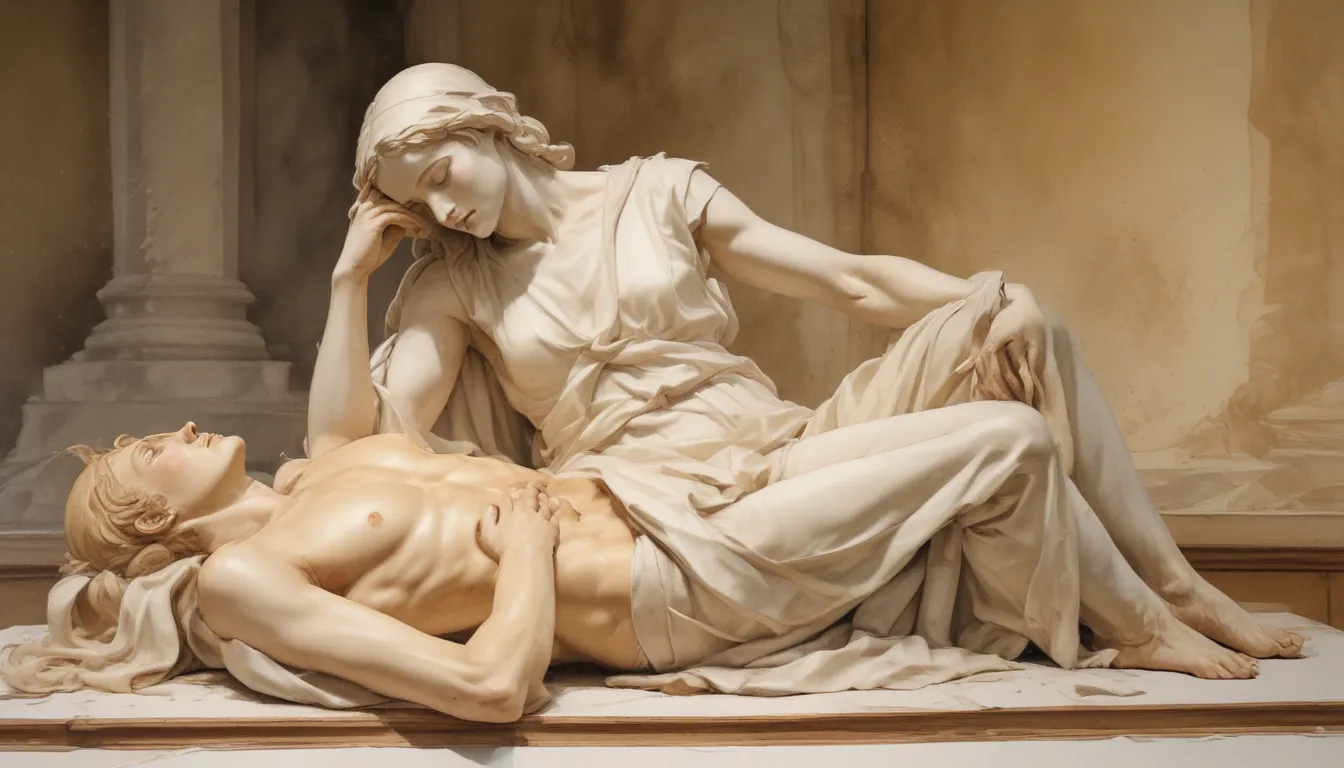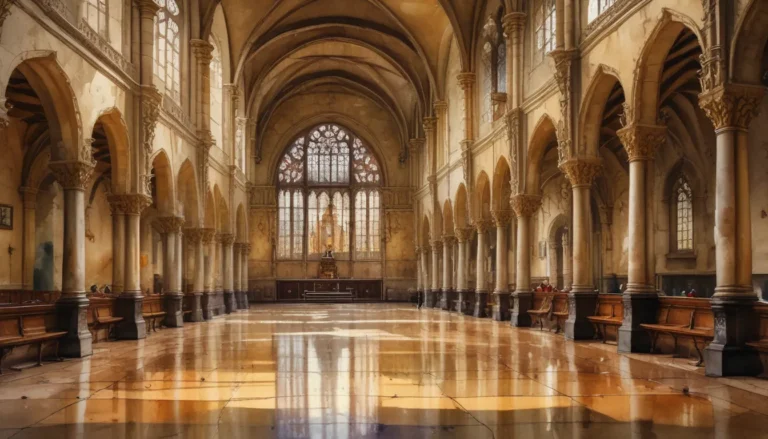The images in our articles are for illustrative purposes only and may not exactly match the content. They are intended to capture your interest and complement the text, not to replace it.
Welcome to the enchanting world of the Pietà, a timeless masterpiece crafted by the genius Michelangelo. In this article, we will delve into the fascinating history and extraordinary facts surrounding this iconic sculpture. From its creation during the Renaissance to its enduring impact on art history, the Pietà continues to captivate audiences with its beauty and emotional depth.
Michelangelo and His Masterpiece
Michelangelo, the renowned Italian artist, sculpted the Pietà between 1498 and 1499, showcasing his unparalleled talent and creativity. This magnificent sculpture depicts the sorrowful moment when the Virgin Mary cradles the lifeless body of Jesus after his crucifixion. The intricate details and emotional portrayal of this scene have mesmerized art enthusiasts and historians for centuries, making the Pietà one of the greatest sculptures of all time.
A Symbol of Grief and Compassion
The Pietà captures the profound grief and intense compassion that Mary felt as she held her son in her arms. This emotional depth is conveyed through Michelangelo’s meticulous carving of the figures, bringing to life the raw and poignant moment after Jesus’ death. The sculpture serves as a powerful symbol of maternal love and human suffering, resonating with viewers on a deep and personal level.
The Significance of a Single Block of Marble
One of the most remarkable aspects of the Pietà is that Michelangelo sculpted it from a single block of Carrara marble. The artist believed that the beauty of the sculpture was already contained within the stone, and his role was simply to reveal it to the world. This unique approach showcases Michelangelo’s exceptional skill and vision, turning a lifeless block of marble into a masterpiece that captures the essence of divine beauty.
A Rare Signature of Pride
In a departure from his usual practice, Michelangelo boldly signed the Pietà on the sash across Mary’s chest. This act of signing not only reflects the artist’s pride in his work but also highlights the significance he attached to this particular sculpture. The signature serves as a testament to Michelangelo’s unwavering dedication to creating a timeless piece of art that would resonate with audiences for generations to come.
Guardian of St. Peter’s Basilica
Since its completion, the Pietà has found its permanent home in St. Peter’s Basilica in Vatican City. Visitors from around the world flock to admire this awe-inspiring sculpture in one of the most iconic religious sites globally, experiencing firsthand the profound impact it has on all who behold it. The Pietà stands as a testament to Michelangelo’s artistic brilliance and spiritual vision, drawing in viewers with its timeless beauty and emotional resonance.
Embodying Renaissance Perfection
The Pietà embodies the ideals of the Renaissance era, showcasing the perfect balance of harmony, proportion, and anatomical accuracy. Michelangelo’s mastery of form and expression in this sculpture set a new standard for artistic excellence, solidifying its status as a symbol of Renaissance perfection. The pyramidal composition and reflective polishing techniques used by Michelangelo further enhance the sculpture’s visual impact, highlighting its beauty and grace.
Enduring Fame and Global Inspiration
Despite facing acts of vandalism throughout its history, the Pietà has endured as one of the most famous artworks in the world. Its enduring fame and profound impact on art history make it a beloved and significant masterpiece that continues to captivate audiences worldwide. Countless reproductions and replicas pay homage to the original sculpture, allowing people from all walks of life to experience the beauty and emotion of the Pietà.
Conclusion: A Testament to Timeless Beauty
In conclusion, the Pietà stands as a testament to the enduring power of art to touch the soul and inspire generations. Michelangelo’s masterpiece continues to captivate audiences with its beauty, emotional depth, and historical significance, making it one of the most revered artworks in human history. Whether you are an art enthusiast, history buff, or simply curious about this iconic sculpture, exploring the eleven extraordinary facts about the Pietà offers a deeper appreciation for its complexity and impact. The Pietà remains a beacon of artistic brilliance and spiritual resonance, inviting viewers to immerse themselves in its timeless beauty and profound symbolism.
FAQs: Unveiling the Mysteries of the Pietà
- Who created the Pietà?
-
Michelangelo Buonarroti sculpted the Pietà between 1498 and 1499, displaying his exceptional talent and creativity at a young age.
-
Where is the Pietà currently located?
-
The Pietà is proudly housed in St. Peter’s Basilica in Vatican City, attracting visitors from around the world with its beauty and emotional depth.
-
How was the Pietà created?
-
Michelangelo meticulously carved the Pietà from a single block of Carrara marble, achieving incredible detail and realism that continues to awe viewers today.
-
What is the meaning behind the Pietà?
-
The Pietà depicts the grieving Virgin Mary holding the lifeless body of Jesus after his crucifixion, symbolizing maternal love and human suffering.
-
Has the Pietà ever been damaged?
-
Yes, in 1972, the sculpture faced significant damage due to an act of vandalism, but skilled artisans restored it to its former glory.
-
How large is the Pietà?
-
The Pietà measures approximately 5 feet 8 inches in height and 6 feet 8 inches in width, showcasing its grandeur and impact.
-
Why is the Pietà considered extraordinary?
-
The Pietà is hailed for its exceptional beauty, technical skill, and emotional impact, making it a masterpiece that transcends time and culture.
-
Are there any replicas of the Pietà?
-
Yes, several replicas of the Pietà can be found worldwide, paying tribute to Michelangelo’s masterpiece and spreading its message of love and compassion.
-
Can visitors touch the Pietà?
-
No, the Pietà is protected by a glass panel to preserve its beauty and integrity, ensuring that it continues to inspire and move audiences for years to come.
-
Has the Pietà inspired any other artworks?
- Yes, the Pietà has served as a source of inspiration for artists throughout history, influencing various paintings, sculptures, and creative works that echo its timeless beauty.
-
Is the Pietà considered Michelangelo’s greatest work?
- While the Pietà is renowned as one of Michelangelo’s greatest masterpieces, the artist’s other works, such as the Sistine Chapel ceiling and the statue of David, also hold significant acclaim in the art world.
Unraveling the mysteries of the Pietà reveals a masterpiece that transcends time and culture, inviting viewers to contemplate its beauty and emotional depth. As we continue to explore the world of art and its impact on society, the Pietà stands as a shining example of the enduring power of creativity and inspiration. Let the timeless beauty of Michelangelo’s masterpiece guide you on a journey of discovery and reflection, as you delve into the heart of one of the most beloved artworks in human history.






